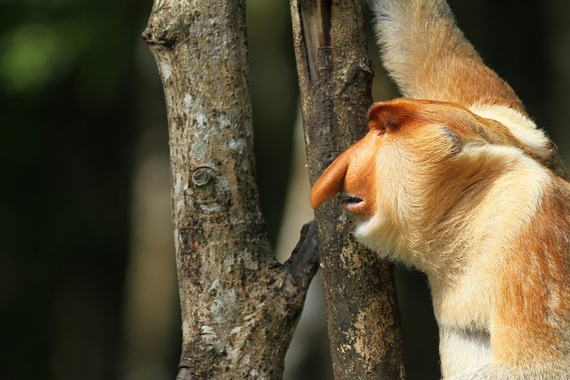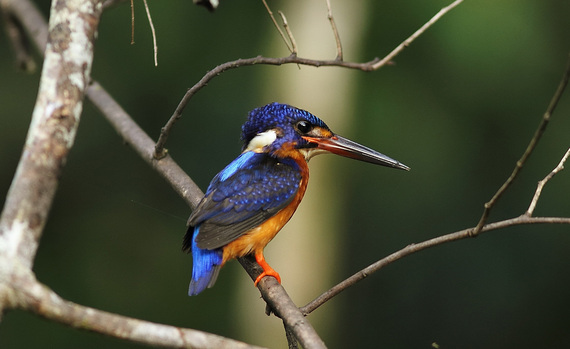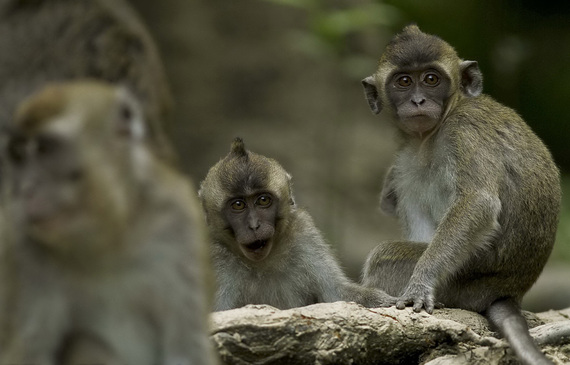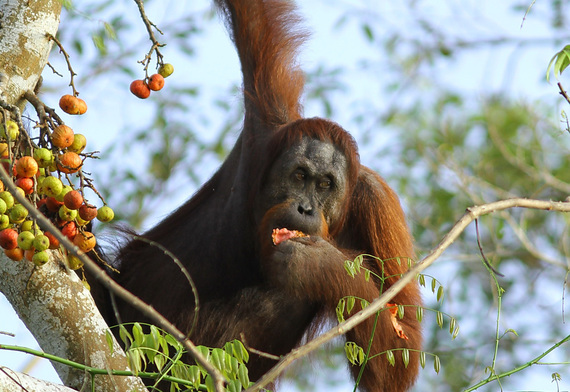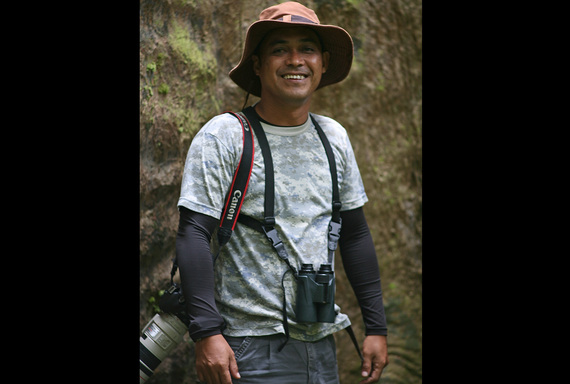Avid naturalist and outstanding local guide Jame Marajan gives us an insight into the incredible wildlife the rainforests of Sabah have to offer.
Originally from the small town of Sandakan in the northeast of Sabah, Jame Marajan has guided travellers through the Bornean rainforest and along its waterways for the past 17 years. With a focus on the east, Jame has become an expert on this ecologically rich region, with regular visits to the lower Kinabatangan Wildlife Sanctuary, Gomantong Cave, Selingaan Turtle Island and Sepilok Orangutan Rehabilitation Centre. The lower Kinabatangan river is an extraordinary area of 26,000 hectares that is home to the largest wildlife concentration in Southeast Asia. Jame talks to us about the land he knows so well.
What wildlife do visitors to the region typically see?
Well, more than 100 different species of mammals have actually been recorded, from the smallest Bornean pygmy squirrel to the largest Bornean pygmy elephant. There are over 200 species of birds, including all eight species of hornbills, and more than 100 species of reptiles, including snakes, soft shell turtles, estuarine crocodiles and lizards. Proboscis Monkeys are endemic to Borneo, and we have macaques and wild orangutans too. These are all species that people can actually see when they visit.
And what is your most memorable wildlife encounter?
A few years back, I was trekking with two American tourists by an oxbow lake when a Borneo pygmy elephant bull suddenly appeared about 10 metres away from us. It was shocked to see us there and the same goes for us. In fact, both parties were so shocked, we all ran a different way.
Do you have a favorite species to spot?
My favourite animal has alway been the snake, as they're such fascinating and primitive creatures. Even now, so little is known about their habitat, breeding and behaviour. But, I also like to see the clouded leopard and Bornean ground cuckoo because appearances are so rare.
What challenges have you faced guiding people through the rainforest?
Once, when I took five Canadian students trekking through the jungle, I saw a nest of stinging bees. I pointed to it and warned them to keep away, but one of them reached out and poked it, after which they all ran in different directions. I managed to gather them up after half an hour, but the student who'd poked it got stung five times and I did once. Imagine if it had happened in a denser forest. That's my worst so far [laughs].
Do you have any role in local conservation efforts?
I give my guests the opportunity to buy seeds for our tree planting project. The seeds are supplied by local NGOs for guests to buy at their lodge and plant in an area that's been selected for the green corridor, which is an effort established to regenerate forest and link one forested area to another, enabling wildlife to roam further. Normally, we plant trees during our leisure time as well.
How has the environment changed in your time there?
I noticed real changes in the environment in my early days as a guide, when some areas were made into palm oil plantations, although in reality some of these areas were already plantations for rubber or cocoa. From a conservation point of view, this is against the normal conditions of flora and fauna, since it isn't a suitable habitat for most indigenous animals. Economy wise, we need some land for agriculture to support our country's economy, This means it's important for some areas of forest to be protected by the State Government, so they can remain unchanged.
Alfred Wallace was a pioneering naturalist and explorer in Sabah, and to this day naturalists, such as David Attenborough, continue to unearth more of the habitat's secrets. Do you think there are still many more species to discover there?
Alfred Wallace is well known for his natural history studies and as a leading expert on the geographical distribution of animal species, as well as making contributions to the development of evolutionary theory, besides being co-discoverer of natural selection, such as the concept of warning colouration in animals. I believe there is connection between him and the TV broadcast naturalists, such as Sir David Attenborough, in the way that both have appreciated and shown concerns over environmental impact of human activity. I also believe there are many more species to discover. I just came back from a tour in which we did a river safari on one of the final nights. In addition to the usual species, we saw a flat-headed cat and a 3-4 metre long reticulated python, neither of which I would ever have expected to see. We were so happy to spot such an incredible variety of animals in one night.
What do you find most exciting about the environment there?
There are more and more conservation efforts to support the area's flora and fauna, such as creating man-made paths for orangutan to cross the tributaries found along the Kinabatangan river, and man-made nests for the hornbills to breed.
Is there any wildlife there that you'd like to see but haven't yet?
I'd like to see the Sumatran Rhinoceros in the wild. If I do, it'll be a big bonus for me.
As well as a guide and nature enthusiast, Jame is an avid wildlife photographer, hoping to one day become known around the world for his work. His aim is to capture images of the elusive clouded leopard and the Bornean ground cuckoo. All wildlife images in this article have been taken by him.
